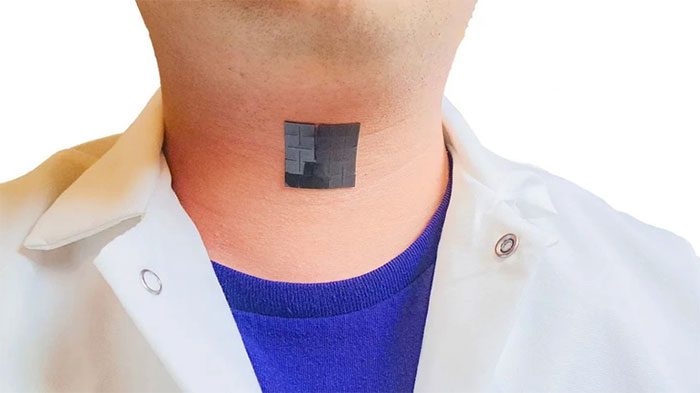A new device adhered to the neck could assist individuals who are unable to speak due to vocal cord issues in communicating.
This small patch-like device can not only detect throat movements but also harness those movements to generate electrical power, allowing it to operate independently without batteries or charging sources.

The new device helps convert throat muscle movements into speech – (Photo: UCLA).
A study published on March 12 in the journal Nature Communications theoretically could assist those with speech disorders caused by damaged vocal cords or vocal cord paralysis, including individuals recovering from pharyngeal cancer surgery.
According to Jun Chen, the lead researcher at the University of California, the idea for the device emerged after he experienced a sore throat from lecturing for hours.
Chen explained that the design of this patch is based on a study he authored in 2021, published in Nature Materials, which explored the material used.
Since the mid-19th century, scientists have known that the magnetic properties of certain hard metals can be altered under mechanical pressure. In the 2021 study, Chen’s team discovered a similar prototype that could operate using a soft material made from tiny magnets embedded in thin silicon.
In the latest research, the team utilized this aforementioned material in the patch, enabling it to respond to pressure from throat muscle movements acting upon it. When a person performs the necessary movements to speak, the device responds by generating electrical signals that can be translated into speech.
Despite the promising results, the device is still in the early stages of development. Testing has been limited to a few phrases and short sentences. Chen stated that the team will continue to work on enhancing the device’s speech conversion capabilities.
Existing technologies, such as a small battery-operated device known as an electrolarynx, are often expensive or invasive, making them inaccessible to many. The research team indicated that if proven effective, this new device could make speech-assistive technology more convenient and less invasive.


















































